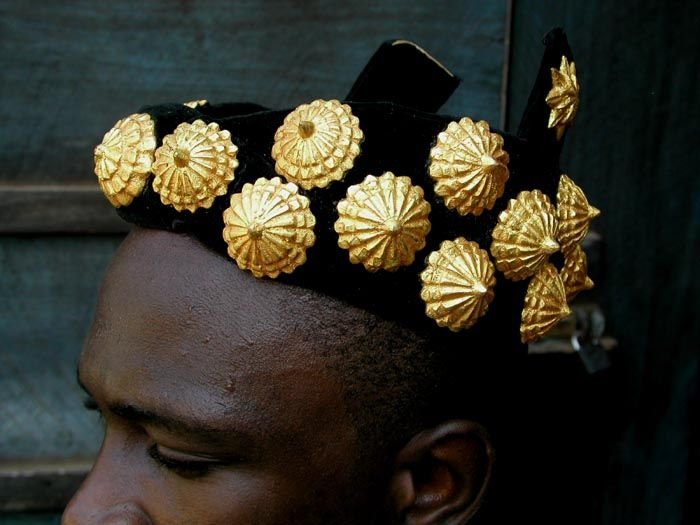How position affects our interpretation of jewelry on the body
3rd of 3 Lessons
Jewelry is meant to be worn.
While there are examples of jewelry that are so well-crafted, made of such exquisite or rare materials, or of such extraordinary cultural importance that they successfully exist as independent objects, the original intent is always that they be worn.
In our final examination of the design element position, we consider that the way we interpret jewelry is affected by its placement on the body. Conversely, our attention to different parts of the body is influenced by jewelry. The interaction of jewelry and the body activates fundamental design concepts, such as scale, movement, and balance, through positioning.
Sometimes, the position of the jewelry, where it is worn on the body, carries a cultural message, such as with wedding rings. And some jewelry must be worn for us to even see and understand the design.
Poultry Accumulus, Necklace, 2009, eggshell, carbon fiber, gold, steel
Our interpretation of a piece of jewelry depends on seeing it on the body.
The impact of jewelry is influenced by the relationship between the scale of our clothing, the size of the jewelry, and the location on the body where the jewelry is worn.
Having an Ideal Customer Avatar (ICA) in mind when designing will give jewelry makers more influence over how their work is interpreted and received.
Because jewelry is viewed on the body, its placement or location can override some jewelry design decisions.
The center is the strongest, most stable position in a design. It is a typical arrangement in jewelry often seen when a central gem dominates the layout. It can also be boring, fixing the gaze with no desire to explore the design. However, because jewelry is worn on a moving body, these design concerns are less significant.
Jewelry can be intimate and worn under clothing, but when it is visible to others, its placement on the body can broadcast significant messaging.
Each type of jewelry—crowns, necklaces, earrings, bracelets, etc.—calls attention to a specific area of the body.
Crowns, tiaras, and other headpieces are never worn casually. Their positioning on the head conveys meaning understood across all cultures and traditions.
Whether the headpiece signifies royalty or other rarified status, we recognize the unique social position of the wearer.
Ashanti
British
Japanese
Everyone knows- Superheroes wear cuffs
A brilliant young superhero purposefully selected power cuffs from his mother’s arsenal.
Understanding how position shapes the narrative of jewelry empowers us, both as makers and wearers, to be more intentional with our choices. The placement of a piece isn't merely functional—it's a deliberate act of communication that speaks before we do. When we recognize that a delicate chain at the collarbone whispers intimacy while bold shoulder pieces command authority, we begin to see jewelry as a sophisticated language of positioning. This awareness transforms how we approach design, moving beyond aesthetic considerations to embrace the full dialogue between body, ornament, and observer.
The interplay between jewelry and its position on the body reveals design as a living, breathing practice rather than a static exercise. As makers, when we consider not just what we create but where it will live on the human form, we tap into centuries of cultural understanding about power, beauty, and meaning.
The most successful jewelry designs amplify both the wearer's presence and the piece's intended message. In this dance between ornament and anatomy, position becomes the choreographer, directing attention and meaning with every placement.
~~~~~~~~~~~~~~~~~~~
Links and Resources
Sergey Jivetin https://www.sergeyjivetin.com/ https://www.instagram.com/sjivetin/ https://artjewelryforum.org/interviews/ajf-in-conversation-0/
Omi Privé https://omiprive.com/ https://www.instagram.com/omiprive/
Tracee Ellis Ross image https://press.tiffany.com/tracee-ellis-ross-wears-tiffany-co-at-the-2021-naacp-image-awards/
Jewelry Club – design and cultural awareness for jewelry makers https://www.judyparady.com/jewelry-club









